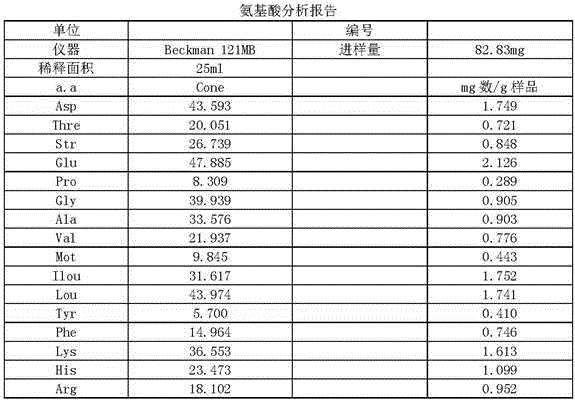Adonis amurensis dietary fiber product
A technology of dietary fiber and calendula officinalis, which is applied in the field of innovative agricultural development, can solve the problems that there is no information report on dietary fiber products of calendula officinalis, and the characteristics of calendula officinalis are different.
- Summary
- Abstract
- Description
- Claims
- Application Information
AI Technical Summary
Problems solved by technology
Method used
Image
Examples
Embodiment 1
[0027] Harvest the petiole branches of Calendula officinalis in 48 days and the petiole branches in Calendula officinalis in 23 days, dehydrate and dry at a temperature of 73°C, and get 100kg of the above-mentioned raw materials after drying. A non-proportioned mixture of dehydrated dry products of lateral marigold plants and petiole branches. Before drying, the two are mixed together, rinsed with running water for 23 minutes, and enter the dehydration operation. After dehydration, place 100 kg of the above-mentioned mixed raw materials in a pulverizer one by one for pulverization. In order to keep the temperature of the raw materials due to physical extrusion and grinding during the pulverization process, the temperature of the raw materials should not exceed 130°C. Thinly drop in when feeding, finish pulverizing 80 order to 140 order mixed fine powder in 1 hour, except material consumption, make 99.5kg product of the present invention.
Embodiment 2
[0029] For side marigolds planted in the field, the edges of the leaves show discoloration, which is a sign of leaf failure. For the whole plant, the whole plant is harvested from the root. On the second day of harvesting, when it is rainy, the harvested items are placed Indoors, use a hair dryer to do natural blowing, dry at room temperature for one day, then stop blowing, dry naturally for 12 days, dehydrate until the average moisture content of the batch is below 13%, and then use a conventional pulverizer to crush into 80 mesh to 140 mesh and mix Fine powder, packaged for later use.
Embodiment 3
[0031] Cut off the side marigold seedling 80kg of growth period 38 days, send city fruit granule processing factory to do OEM, advise the parameter control of the present invention's scheme in its technology, all the other according to conventional technology, operate with conventional equipment, make except material consumption Dry finished product 11kg.
PUM
 Login to View More
Login to View More Abstract
Description
Claims
Application Information
 Login to View More
Login to View More - R&D Engineer
- R&D Manager
- IP Professional
- Industry Leading Data Capabilities
- Powerful AI technology
- Patent DNA Extraction
Browse by: Latest US Patents, China's latest patents, Technical Efficacy Thesaurus, Application Domain, Technology Topic, Popular Technical Reports.
© 2024 PatSnap. All rights reserved.Legal|Privacy policy|Modern Slavery Act Transparency Statement|Sitemap|About US| Contact US: help@patsnap.com









